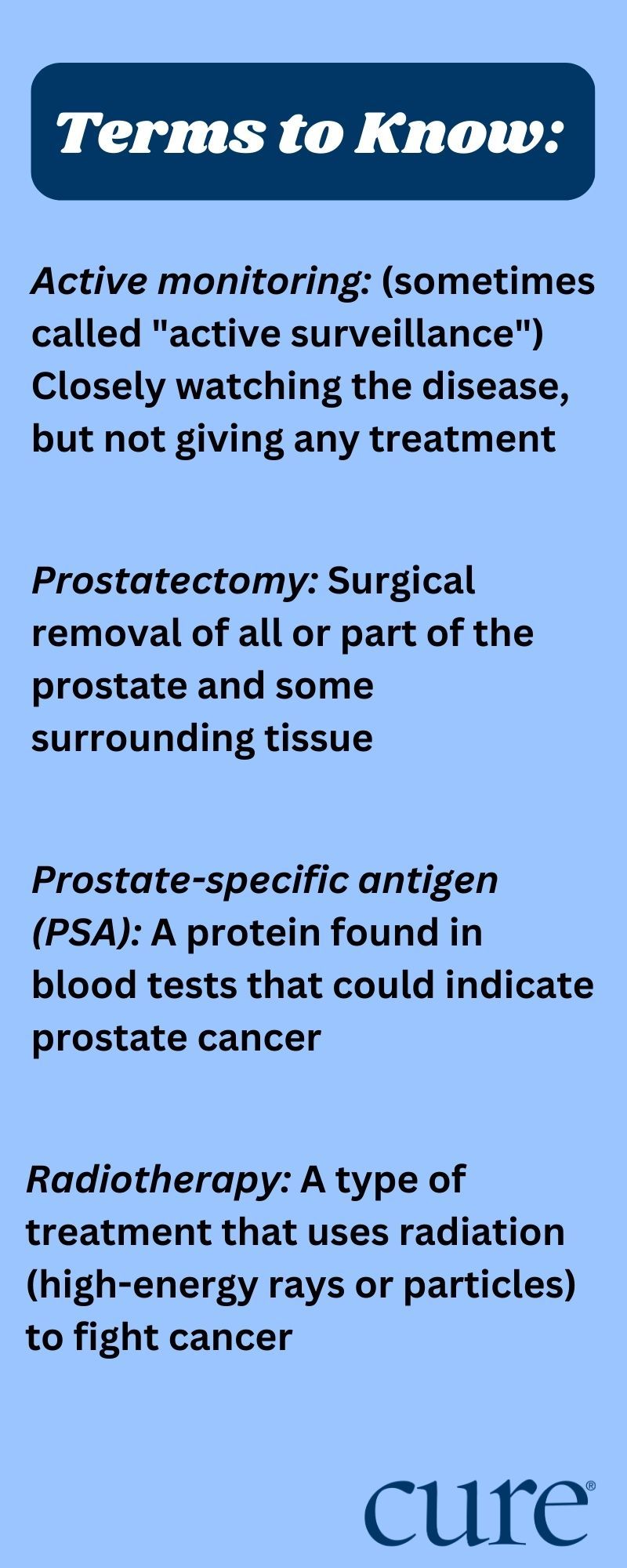Article
Long-Term Prostate Cancer Outcomes May Not Differ by Treatment Type
Author(s):
Researchers determined that mortality rates did not differ in men with localized prostate cancer if they underwent active monitoring, prostatectomy or radiotherapy.
After 15 years of follow-up, men with localized prostate cancer had low rates of death related to the disease regardless of the treatment they were assigned, which included active monitoring, prostatectomy or radiotherapy, according to recent study findings.

“Our findings indicate that depending on the extent of side effects associated with early radical treatments, more aggressive therapy can result in more harm than good,” the researchers wrote. “Clinicians may avoid overtreatment by ensuring that men with newly diagnosed, localized prostate cancer consider critical trade-offs between short-term and long-term effects of treatments on urinary, bowel and sexual function, as well as the risks of progression.”
In the study published in the New England Journal of Medicine, researchers analyzed data from 1,643 men aged 50 to 69 years with localized prostate cancer diagnosed via prostate-specific antigen (PSA) test. Patients had their PSA levels measured every three months during the first year of the trial and every six to 12 months after that. Of note, more than one-third of the men in this study had intermediate- or high-risk disease at diagnosis.
The men in the study were randomly assigned either active monitoring (545 patients), prostatectomy (553 patients) or radiotherapy (545 patients).
Patients in the active monitoring group underwent review with their clinician if their PSA level increased at least 50% during a 12-month period. Those in the prostatectomy (surgery to remove part or all of the prostate and some tissue around it) group had discussions with the team about undergoing adjuvant (treatment given after primary treatment to potentially lower the risk for disease recurrence) or salvage radiotherapy (treatment given after cancer has not responded to other treatments), particularly if they had positive surgical margins, meaning that cancer cells were detected at the edge or border of the tissue removed during surgery. Patients assigned radiotherapy also received neoadjuvant (or as a first treatment) androgen-deprivation therapy for three to six months.
The main factor assessed by researchers in this study was death from prostate cancer. Other measures analyzed by the researchers included all-cause death, metastases, clinical progression and long-term androgen-deprivation therapy alone. Patients were followed up for a median of 15 years.
Death caused by prostate cancer occurred in 2.7% of men in this study. When assessed by treatment approach, death occurred in 3.1% of men in the active-monitoring group, 2.2% of those in the prostatectomy group and 2.9% of men in the radiotherapy group. The rate of all-cause death was 21.7% in the entire study population, although the percentages were similar in the three groups.
Metastases were diagnosed in 9.4% of men in the active-monitoring group, 4.7% of those in the prostatectomy group and 5% of men in the radiotherapy group.
Long-term androgen-deprivation therapy was started in 12.7% of men assigned active monitoring, 7.2% of those assigned prostatectomy and 7.7% of men assigned radiotherapy. Clinical progression of prostate cancer was seen in 25.9%, 10.5% and 11%, respectively.
Of the men assigned active monitoring, 24.4% were alive without any treatment for prostate cancer at the end of follow-up.
Effects on cancer-related death did not differ based on PSA level at the start of the study, risk-stratification score and either tumor grade or stage.
“Our findings provide evidence that greater awareness of the limitations of current risk-stratification methods and treatment recommendations in guidelines is needed,” the study authors wrote. “Men with newly diagnosed, localized prostate cancer and their clinicians can take the time to carefully consider the trade-offs between harms and benefits of treatments when making management decisions.”
For more news on cancer updates, research and education, don’t forget to subscribe to CURE®’s newsletters here.




